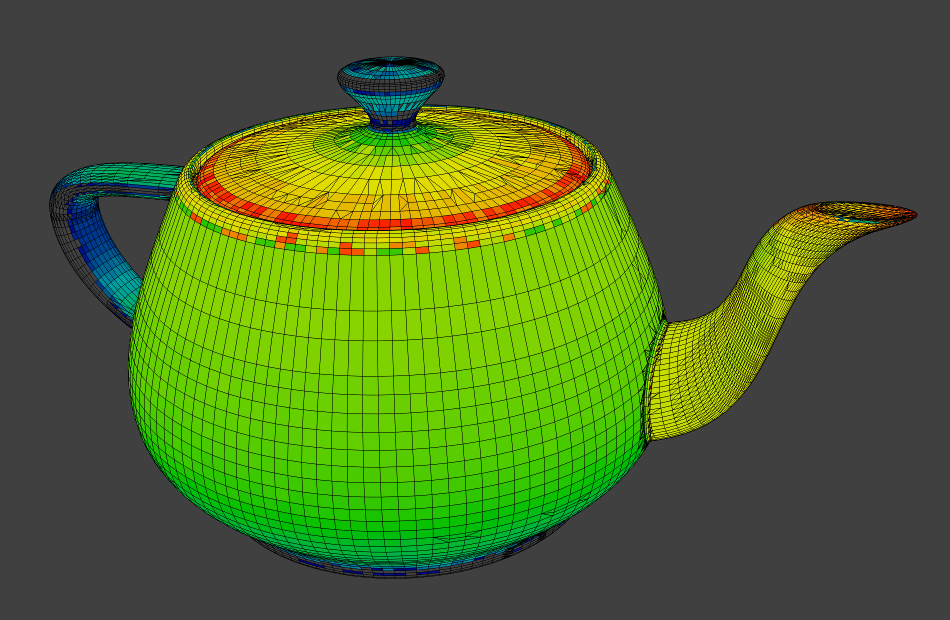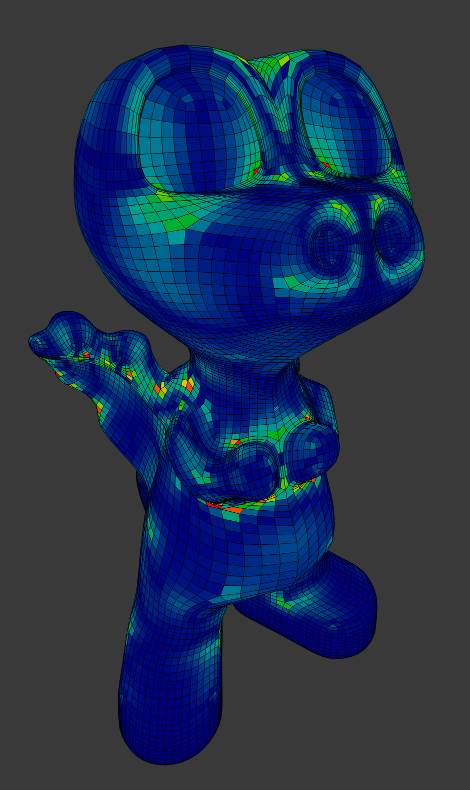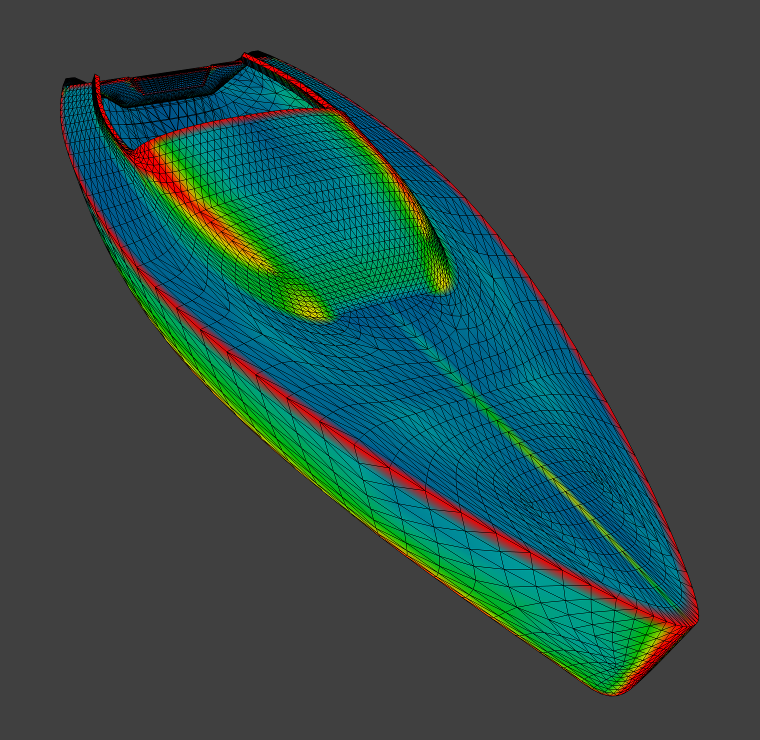Phân Tích Khung Lưới (Mesh Analysis)
Tham Chiếu (Reference)
- Chế Độ (Mode)
Chế Độ Biên Soạn (Edit Mode)
- Bảng (Panel)
Mesh analysis is useful for displaying attributes of the mesh, that may impact certain use cases.
The mesh analysis works in Edit Mode and Solid Viewport shading. It shows areas with a high value in red, and areas with a low value in blue. Geometry outside the range is displayed gray.
Currently the different modes target 3D printing as their primary use.
Độ Nhô Ra (Overhang)
Extrusion 3D printers have a physical limit to the overhang that can be printed, this display mode shows the overhang with angle range and axis selection.
- Tối Thiểu/Tối Đa (Minimum/Maximum)
Tối Thiểu/Tối Đa X, Y, Z.
- Axis (Trục)
Axis and direction to use as the bases to calculate the angle to visualize.

Độ Nhô Ra.
Độ Dày (Thickness)
Printers have a limited wall-thickness where very thin areas cannot be printed, this test uses ray casting and a distance range to the thickness of the geometry.
- Tối Thiểu/Tối Đa (Minimum/Maximum)
Tối Thiểu/Tối Đa X, Y, Z.
- Lượng Mẫu Vật (Samples)
Number of samples to use to calculate the thickness.

Độ Dày.
Giao Cắt Nhau (Intersections)
Another common cause of problems for printing are intersections between surfaces, where the inside/outside of a model cannot be reliably detected.
Unlike other display modes, intersections have no variance and are either on or off.

Giao Cắt các Đường Cong.
Biến Dạng (Distortion)
Distorted geometry can cause problems since the triangulation of a distorted n-gon is undefined.
Distortion is measured by faces which are not flat, with parts of the face pointing in different directions.
- Tối Thiểu/Tối Đa (Minimum/Maximum)
Minimum/Maximum distortion to display.

Khoảng cách.
Những Hạn Chế Từng Biết Đến (Known Limitations)
There are some known limitations with mesh analysis:
Currently only displayed with Deform Modifiers.
For high-poly meshes the performance is low while editing.
